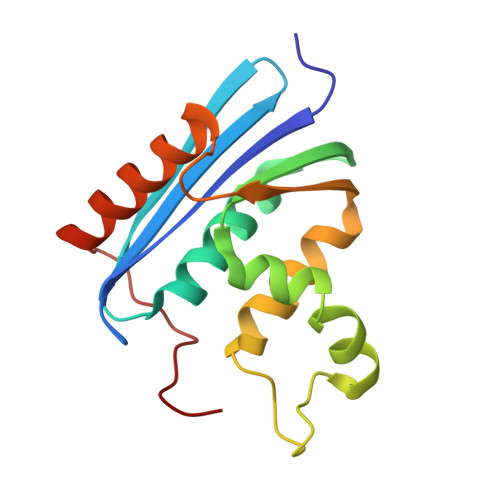Structural study of mutants of Escherichia coli ribonuclease HI with enhanced thermostability.
Ishikawa, K., Kimura, S., Kanaya, S., Morikawa, K., Nakamura, H.(1993) Protein Eng 6: 85-91
- PubMed: 8381958
- DOI: https://doi.org/10.1093/protein/6.1.85
- Primary Citation of Related Structures:
1RBR, 1RBS, 1RBT, 1RBU, 1RBV - PubMed Abstract:
Systematic replacement of the amino acid residues in Escherichia coli ribonuclease HI with those in the thermophilic counterpart has revealed that two mutations, His62-->Pro (H62P) and Lys95-->Gly (K95G), increased the thermostability of the protein. These single-site mutant proteins, together with the mutant proteins His62-->Ala (H62A), Lys95-->Asn (K95N) and Lys95-->Ala (K95A), were crystallized and their structures were determined at 1.8 A resolution. The crystal structures of these mutant proteins reveal that only the local structure around each mutation site is essential for the increase in thermostability. For each mutant protein, the stabilization mechanism is considered to be as follows: (i) H62P is stabilized because of a decrease in the entropy of the unfolded state, without a change in the native backbone structure; (ii) K95G is stabilized since the strain caused by the left-handed backbone structure in the typical 3:5 type loop is eliminated; and (iii) K95N is slightly stabilized by a hydrogen bond formed between the side-chain N delta-atom of the mutated aspargine residue and the main-chain carbonyl oxygen within the same residue.
Organizational Affiliation:
Protein Engineering Research Institute, Osaka, Japan.














